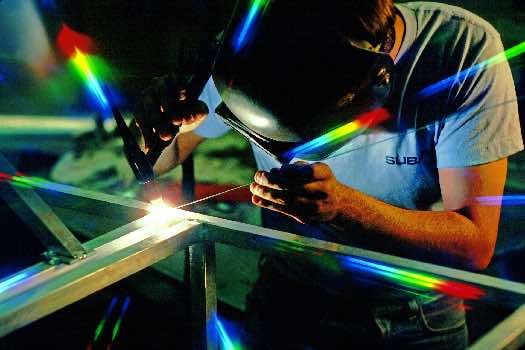The manufacturing industry is entrenched in eastern Ontario, but is rapidly changing and improving in response to many external factors. To continue to thrive, manufacturing needs to stay on top of key trends.
Innovation and Technology Are Top Manufacturing TrendsTechnology in the form of robotics, interconnected machines, and computer aided design (CAD) tools have been common practice in manufacturing for years, increasing your efficiency, lean manufacturing capability, and profitability. As networking technology continues to be developed and artificial intelligence (AI) is adopted more extensively, manufacturing will be disrupted by the growing Industry 4.0 revolution.
Innovation is a part of manufacturing, and you have many intelligent, technically-minded people working for you, but your whole organization needs to embrace this mindset and be prepared for change. Fostering a culture of constant learning and adaptation will make it easier for all departments to succeed. Artificial intelligence will not only change how your shop floor operates, but it will also start to automate parts of your customer service and accounting (i.e. repetitive processes). Being on top of innovation and technology will allow you to capitalize on it, and shift the business and employees to complement your efforts.
How to Shift Your Talent Retention and Attraction Strategies
One of the largest career trends in the manufacturing industry right now is the effort to shift hiring and retention strategies as Baby Boomers retire and Millennials become the largest working cohort. Millennials are more prone to job-hopping than other generations, as they seek out work with meaning and purpose behind it that truly suits their skills and desires.
Talent attraction strategies need to be tailored to this new generation by changing the way you construct job postings and where you speak to your potential new hires. First, consider adding information to job postings about work-life balance, the driving values or mission of your company and the comradery of your workforce. Second, post these jobs to a more advanced job board, like Magnet, which encourages the inclusion of the extra information to better educate job seekers on your company, thereby drawing in better-suited candidates. Third, start to talk about your company on platforms that Millennials frequent (i.e. blogs and social media). Talk about your company culture, the daily work that your employees do, and how your company is making a difference in the world.
Don't forget to take advantage of Manufacturing Month every October. Promote manufacturing jobs in schools and post-secondary institutions and reach more job seekers all throughout the month of October.
Consider strengthening talent retention for your aging Baby Boomer workforce, as well as modernizing employment and skills in manufacturing. You can save money on hiring in the short term, and plan for ways to have the retiring experts train the next generation of workers. Instead of just waiting for workers to retire suddenly, requiring you to replace them ASAP, put programs in place to have them gradually reduce hours, while working with the younger generation to teach them their trade. These same retention strategies can be carried forward with your new Millennial workforce, who value work-life balance.
Focus on Skills to Expand Your Workforce
Given the changes in technology and in the demographics of your workforce, it’s time to look at resumes and experience through a different lens. You need a bigger applicant pool to draw from, so you need to start examining an applicant’s skills as much as the years of experience or education they present. Start to look for resilience and softer skills, like communication strengths and problem-solving abilities. After all, the landscape is changing so rapidly that you will need to retrain them anyway, meaning past education is not necessarily an indication of future success.
Broaden your hiring horizons. Give more applicants a shot at your company, especially those who appear to be conscientious, willing to learn, and eager to solve problems for you. If 75% of new hires work out and 25% don’t, that’s ok. Stop putting so much pressure on your ability to hire accurately, and instead allow the potential employee’s skills to shine, giving them a chance to become stellar workers. Let those who aren’t a good fit go.
Support the Increase of Women in Your Workforce
Women remain underrepresented in the Ontario manufacturing workforce. In order to meet the current demand for labour and to increase the diversity of your workforce, you need to hire more women. The complex problems solved in manufacturing need a diversity of opinions and knowledge to come up with the best options for the business, customers and employees. By maximizing the number of women you hire, you’ll be tapping into diversity as you innovate to meet the future head-on.
Attracting women into manufacturing starts with fostering an interest in STEM (science, technology, engineering and math) at an early age. You can work with local workforce development offices and educators to provide case stories of women in technology who are role models for young girls. In addition, you can begin to offer employment benefits that would attract more women to your business, such as childcare options (on-site or subsidized off-site) and improved work-life balance through flexible hours and increased vacation days.
Stay on Top of the Latest Manufacturing Trends
The easiest way to stay abreast of all the latest manufacturing trends is to subscribe to blogs, trade publications, and Google alerts to automatically keep you informed. Digging into the research on the changing landscape of the manufacturing workforce is essential for the continued success of your company.
External links are provided as informational resources only and are not necessarily endorsed by Ontario East.
.png)




